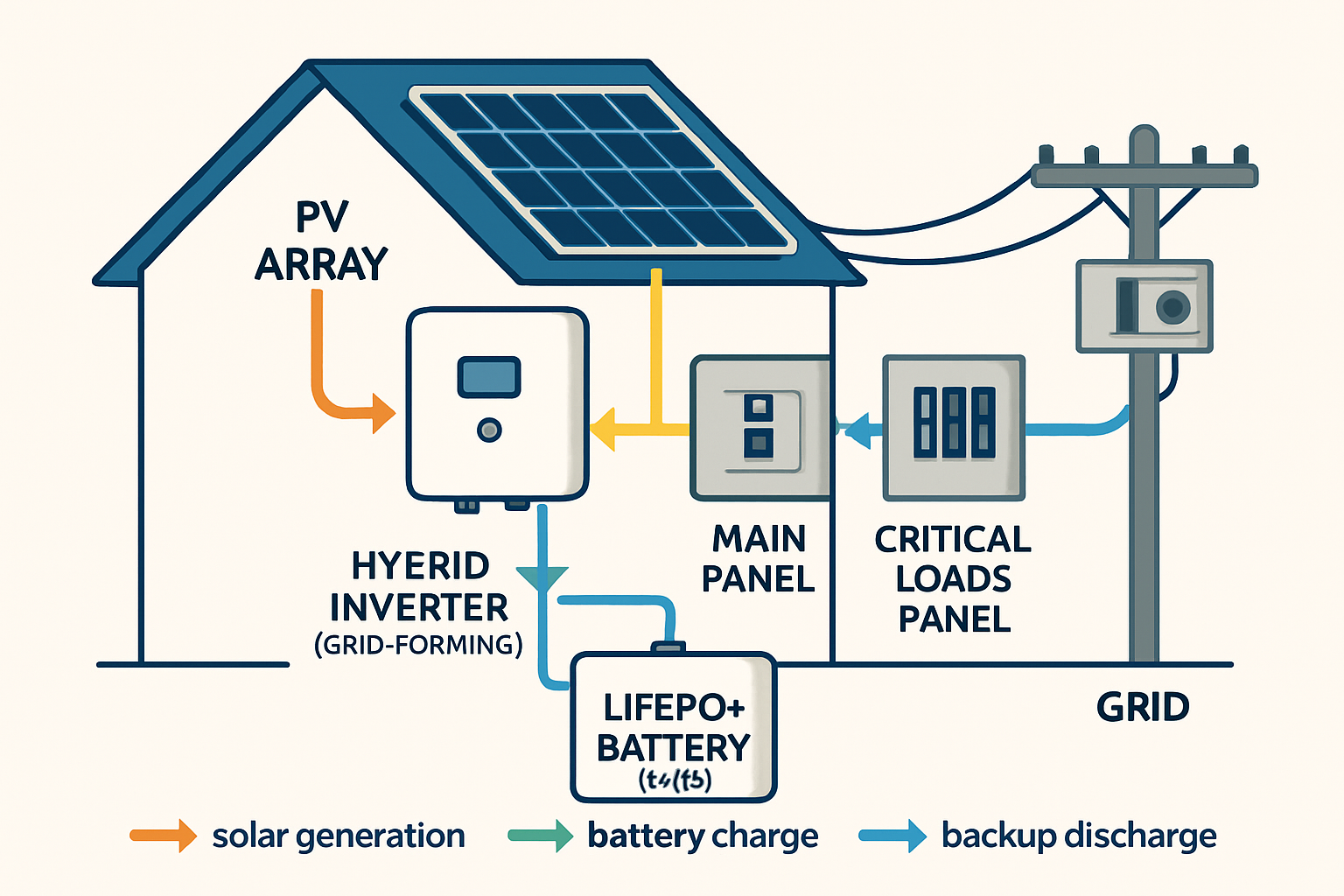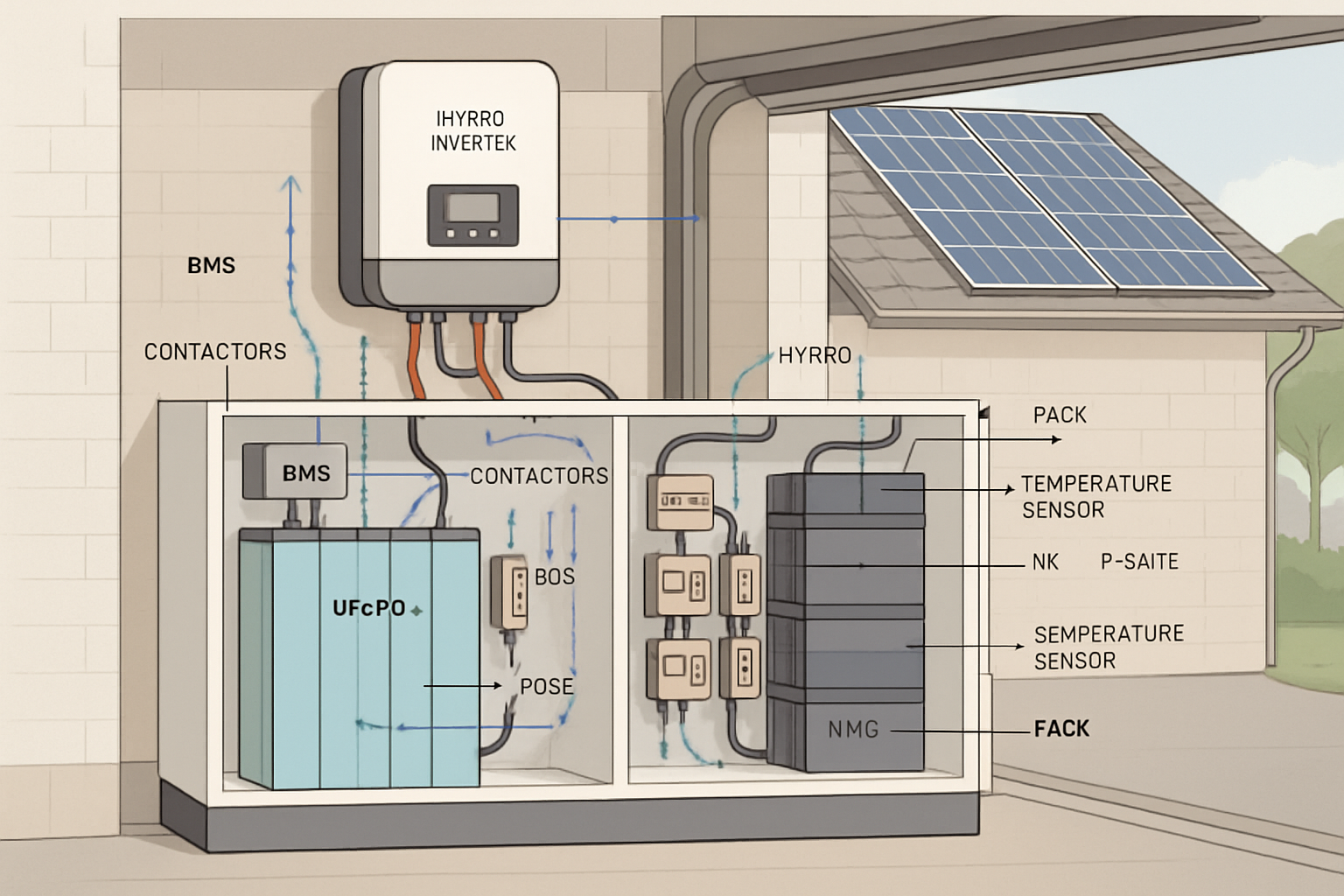Solar myths often swirl around outages and autonomy. Misconceptions linger about how grid-tied and off-grid solar behave when the grid fails. This article clarifies what keeps the lights on and what does not—and how batteries, inverters, and system design determine real outage resilience, supported by technical standards and authoritative sources.

Myth 1: “A grid-tied solar system keeps my home running during a power outage.”
Fact: A grid-tied PV system automatically shuts down during an outage due to anti-islanding protections. Standards like IEEE 1547-2018 and UL 1741 require inverters to cease energizing the grid swiftly for safety. According to NREL, inverter-based systems must detect island conditions and disconnect within seconds (NREL anti-islanding primer).
To remain powered during outages, you need more than panels alone. You must use a hybrid inverter with transfer capability, a battery, and a backup loads panel. In island mode, the system forms a microgrid balancing PV and battery output. DOE explains how storage enables solar resilience during blackouts (DOE inverter & grid-services fundamentals).
Myth 2: “Off-grid solar always ensures full autonomy.”
Fact: Off-grid independence depends on battery size, PV capacity, weather, and consumption control. Winter or extended cloudy spells can defeat undersized systems, causing deep discharge or shutdowns. DOE’s resources on solar-plus-storage cover these limitations and design tradeoffs (Solar-Plus-Storage 101).
System-level resilience: grid-tied vs off-grid
Resilience has two phases: enduring an outage and recovering afterward. A grid-tied system without storage offers no ride-through. Adding a hybrid inverter and battery enables backup for key circuits. Off-grid systems offer autonomy but hinge on redundancy and storage sufficiency. At the grid level, IEA stresses that appropriate, phased integration maintains reliability without raising costs excessively (IEA: Getting Wind and Solar onto the Grid).
| Aspect | Grid-Tied (no battery) | Grid-Tied + Battery (Hybrid) | Off-Grid |
|---|---|---|---|
| Outage behavior | Shuts down — anti-islanding | Forms local microgrid for critical loads | Operates independently — no grid |
| Autonomy | None during outage | Hours to days (depends on battery size) | Days based on system sizing and backup |
| Key components | PV + grid-tied inverter | PV + hybrid inverter + battery + backup panel | PV + off-grid inverter/charge controller + battery + generator (optional) |
| Design focus | Energy savings | Resilience + savings | Full independence + redundancy |
| Complexity | Low | Moderate | High |
Design essentials for autonomy
- Battery sizing: Base on critical daily load × target days ÷ usable DoD ÷ round-trip efficiency.
- PV sizing: Design for worst-case periods (e.g., winter, storms), using historical insolation data.
- Inverter features: Must support grid-forming modes, handle motor surge loads, and manage safe charging for LiFePO₄ batteries.
- Load management: Shift flexible use to sunny periods; reduce battery cycling and prolong lifespan.
Common myths about solar resilience
Myth: “Solar requires 1:1 conventional backup capacity.”
IAE research refutes this. Forecasting, flexible tools, and system coordination allow grids to absorb renewables without mirrored backup (IEA grid-integration findings).
Myth: “Grid upgrades always make renewables unaffordable.”
IEA warns that overly rigid or delayed grid rules are costlier than balanced, phased improvements (The Power of Transformation).
Myth: “Storage is always mandatory at early adoption stages.”
Early-stage VRE (variable renewables) may integrate effectively without storage; storage becomes critical for resilience and higher penetration scenarios (Next-Generation Wind and Solar Power).
Illustrative sizing example
Goal: keep fridge, lights, Wi-Fi, and furnace blower running during an outage.
- Fridge: 1.2 kWh/day
- Lights & Wi-Fi: 0.8 kWh/day
- Furnace blower: 2.0 kWh/day
- Outlets/charging: 1.0 kWh/day
Total ≈ 5 kWh/day. For 24–36 hours autonomy, budget 10–15 kWh LiFePO₄ battery. A 3–5 kW hybrid inverter with 2× surge handles loads, and a 3–6 kW PV array can recharge post-storm on sunny days.
Selecting your path
Match your system to your priorities:
- Grid-tied only: If you want solar savings and your grid is stable.
- Grid-tied with storage: For backup during outages and energy cost optimization.
- Off-grid: For remote locations or full independence, with redundancy.
Core takeaways
- Standard grid-tied systems shut off during outages—anti-islanding is mandatory.
- True autonomy requires careful system design: battery sizing, inverter type, and load management.
- Grid-level resilience requires balanced, phased flexibility measures—not massive overbuilds.
- Solar plus hybrid inverter and LiFePO₄ storage delivers meaningful backup if planned well.
Further reading
- NREL – Primer: Unintentional Islanding
- NREL – Will Solar Panels Help During an Outage?
- DOE – Solar Integration Basics
- IEA – Getting Wind and Solar onto the Grid
- IEA – The Power of Transformation
- IEA – Next-Generation Wind and Solar Power
With the right system design and gear, you can turn sun and storage into everyday reliability—even during rare grid losses.





Leave a comment
All comments are moderated before being published.
This site is protected by hCaptcha and the hCaptcha Privacy Policy and Terms of Service apply.